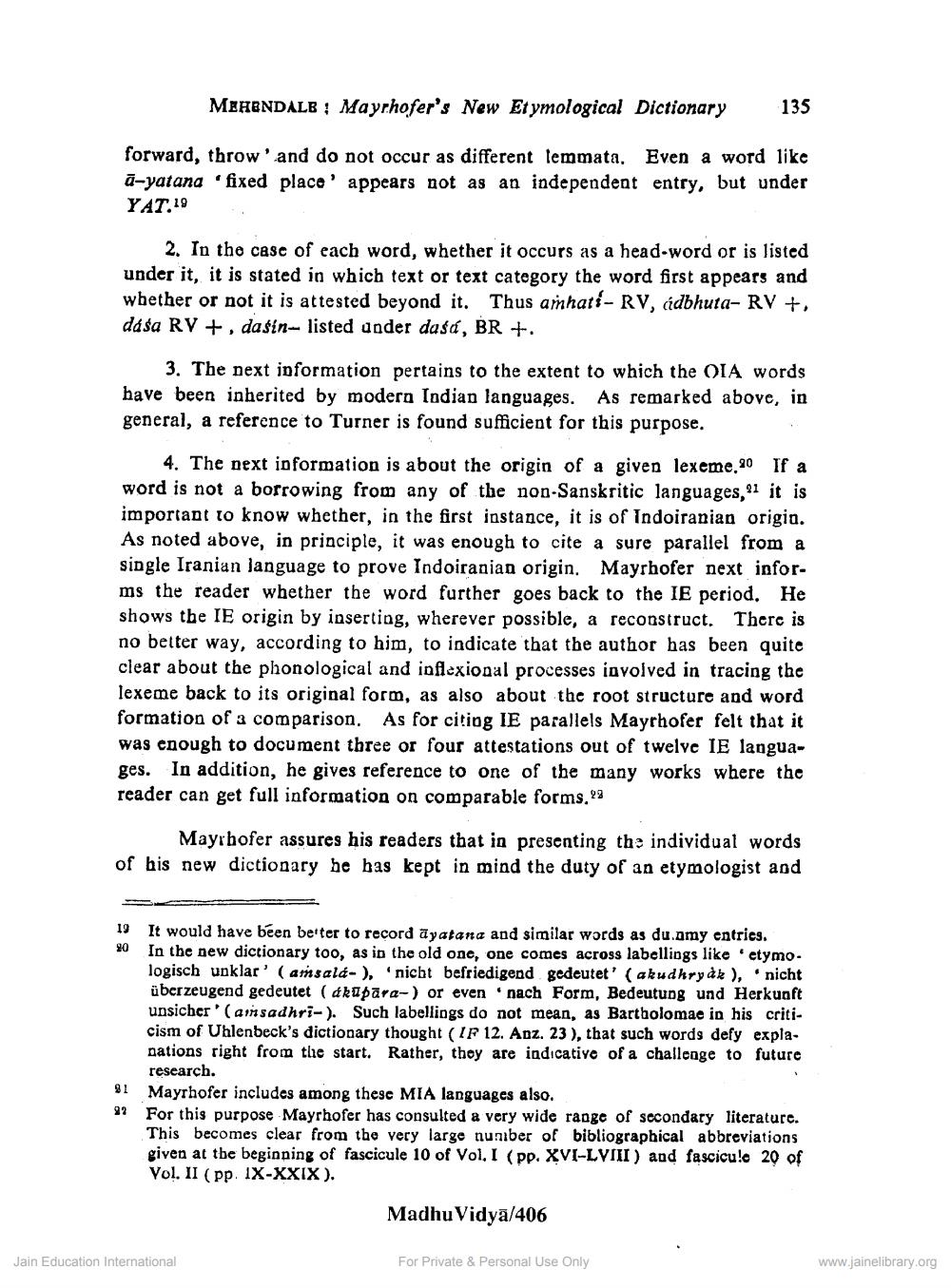________________
MEHENDALB : Mayrhofer's New Etymological Dictionary
135
forward, throw' and do not occur as different temmata. Even a word like ā-yatana 'fixed place' appears not as an independent entry, but under YAT.19
2. In the case of each word, whether it occurs as a head-word or is listed under it, it is stated in which text or text category the word first appears and whether or not it is attested beyond it. Thus arnhars- RV, cidbhuta- RV +, dasa RV +, dasin- listed under dasá, BR +.
3. The next information pertains to the extent to which the OIA words have been inherited by modera Indian languages. As remarked above, in general, a reference to Turner is found sufficient for this purpose.
4. The next information is about the origin of a given lexeme.20 If a word is not a borrowing from any of the non-Sanskritic languages, 41 it is important to know whether, in the first instance, it is of Indoiranian origin. As noted above, in principle, it was enough to cite a sure parallel from a single Iranian language to prove Indoiranian origin. Mayrhofer next informs the reader whether the word further goes back to the IE period. He shows the IE origin by inserting, wherever possible, a reconstruct. There is no better way, according to him, to indicate that the author has been quite clear about the phonological and inflexional processes involved in tracing the lexeme back to its original form, as also about the root structure and word formation of a comparison. As for citiog IE parallels Mayrhofer felt that it was enough to document three or four attestations out of twelve IE languages. In addition, he gives reference to one of the many works where the reader can get full information on comparable forms. 23
Mayrhofer assures his readers that in presenting the individual words of his new dictionary he has kept in mind the duty of an etymologist and
19 It would have been better to record ayatana and similar words as du.amy entries. 40 In the new dictionary too, as in the old one, one comes across labellings like 'etymo.
logisch unklar' (arsald- ), nicht befriedigend gedeutet' (akudhry dk ), nicht überzeugend gedeutet (akapara-) or even nach Form, Bedeutung und Herkunft unsicher (ansadhri-). Such labellings do not mean, as Bartholomae in his criticism of Uhlenbeck's dictionary thought (IF 12. Anz. 23 ), that such words defy explanations right from the start. Rather, they are indicative of a challenge to future
research. $1 Mayrhofer includes among these MIA languages also. 9? For this purpose Mayrhofer has consulted a very wide range of secondary literature.
This becomes clear from the very large number of bibliographical abbreviations given at the beginning of fascicule 10 of Vol. I (pp. XVI-LVIII) and fascicule 29 of Vol. II (pp. IX-XXIX ).
Madhu Vidya/406
Jain Education International
For Private & Personal Use Only
www.jainelibrary.org




